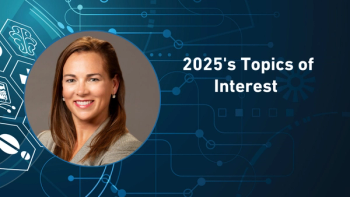
- Pharmaceutical Commerce - July/August 2017
Digital opinion leaders (DOLs) and their role in pharma markets
Like traditional thinking about key opinion leaders (KOLs) in healthcare, consider the DOL as part of a marketing campaign
We suggest that in today’s
increasingly
digital media environment, with social media and other forms of online communication exerting influence equal to (or greater than) traditional media, digital communicators are rising in importance. From this, it follows that the “digital opinion leader” (DOL) should be taking his or her place alongside the traditional “key opinion leader” (KOL) in thinking about market outreach. This article will introduce the DOL concept, the opportunity for life sciences managers to leverage this important group, and a process to identify and engage with DOLs.
Meet the DOL
The DOL is an influential member of an online community to whom others turn for advice, opinions and information. Their influence flows from their reach within a community (how many followers they have), their resonance (how much their content is shared) and their relevance (how relevant their content is to a particular objective). In the medical world, DOLs include clinicians exchanging opinions on therapies, discussing presentations from medical conferences, and sharing practical advice on disease and patient management. In recent years, DOLs with professional backgrounds have converged around Twitter as a medium for publicity and public discourse, particularly around major medical conferences, while simultaneously turning to closed healthcare provider (HCP) platforms for peer-to-peer discussions.
In the patient world, DOLs include patients, caregivers and patient groups. Health bloggers and so-called e-patients taking an active role in their healthcare have amassed large online followings. Patient DOLs utilize a variety of online channels and, notably, are not beholden to a single medium, but continue to experiment with new channels, such as Instagram or Periscope.
The opportunity for life sciences
“Key Opinion Leader (KOL) management” has been a staple of life sciences business strategy for decades. Commercial and medical teams routinely identify and engage KOLs for tasks such as research, publishing or speaking. Currently, DOLs and KOLs exist in largely different universes with little overlap. Typically, less than 20% of KOLs will also have a social media presence and just a handful will rank alongside DOLs in terms of online reach.
By properly involving DOLs in the creation of programs and by regularly sharing with them, life sciences communicators have a built-in megaphone that can expand the authenticity and reach of their messages, as DOLs willingly amplify messages across their social networks.
A process to identify and engage with DOLs
The first step to successful DOL engagement is to know who they are. Identifying DOLs requires approaches that depart from traditional influence mappings that scan through PubMed records and tally peer recommendations. It may be tempting to match existing internal KOL lists with digital profiles, in hopes of finding KOLs with a blog or Twitter account, but this exercise will only reveal a portion of the DOL universe and will miss HCPs who don’t have a publication record, but have built strong reputations among online audiences, as well as numerous new, non-medical influencers, including e-patients.
We highlight three steps to identifying DOLs in the healthcare space:
1. Map the online community of interest
Social media analytics tools offer unprecedented opportunities to map influence across disease areas. Silicon Valley tech executives like to speak about the “social graph” in referring to the network of connections and relationships between users. Mark Zuckerberg, CEO of Facebook, has frequently touted the social graph as “changing the way the world works.” Facebook and other networks keep most of this information for themselves, accessible only to their internal advertising and content teams, but portions of the data are also made public and allow detailed maps of entire online health communities to be generated.
In a given disease area, the online community of interest will consist of several hundred active members, who have each contributed in some form to the discussion around the disease. Silent followers or lurkers will number 10–20 times the size of the active community. In certain high-interest disease areas, such as breast cancer or multiple sclerosis, the community will be even larger, with many thousands of active members and hundreds of thousands of followers.
Many health influencer projects have failed by neglecting to understand the communities they are seeking to influence. A list of influencers based on followers or some variation of a Klout Score is a shortcut that results in lists of names with no clear context of the greater online community of interest and, most likely, will gather dust in someone’s desk drawer.
2. Segment stakeholders
Knowing your customer is vital in the healthcare industry, both from a regulatory and planning perspective. A DOL who is also a physician must be treated differently from a DOL who is a patient or an accredited journalist, even though the subject matter and online audiences may be very similar. Influencer tools designed primarily for non-health industries rarely consider this requirement and measure influence without particular concern for the background and profession of the DOL. A good consulting partner will bring databases and segmentation models that are customized for life sciences needs.
3. Profile and prioritize influencers
A DOL with a massive following does not necessarily represent the best opportunity—a subject matter expert DOL may attract a small, but important audience of specialist followers. It's vital to seek out DOLs with interests that align closely to business objectives. For example, in the case of a pharmaceutical company launching an innovative drug, DOLs with a track record of contributing content around new therapies in the relevant disease area would be potential targets.
All the work that has been done to understand the online community of interest is now used to identify and prioritize DOLs that are both relevant and likely to engage with brand or company objectives. Second- and third-tier influencers that would have been passed over by simple “top influencer” lists may now reveal themselves to be the ideal partners. Detailed profiles of individual DOLs should be generated at this stage, providing insights around favored topics and preferred channels, but also uncovering specific areas of opportunity for engagement.
4. Develop a DOL engagement strategy
Many life sciences companies have some experience engaging with DOLs. Unfortunately, most of these projects have failed to drive impact. Common reasons include identifying influencers but not taking steps to engage, lack of clear internal guidelines for engaging with DOLs, focus on one-off activities versus sustained relationship building, failing to find mutually beneficial projects, and unclear roles and responsibilities. In many cases, life sciences firms don’t have the expertise in-house to carry out a DOL program from end to end.
We offer three tips for pharma leaders who wish to maximize the opportunity:
- Define areas of mutual benefit to both DOLs and the life sciences firm. Stay away from single-brand promotional projects. Focus on franchise building, disease education, patient support, clinical trial, services provision, and other projects that are patient or provider-centric.
- Think relationship versus tactic. DOLs are most attracted to a mutually beneficial relationship that grows over time. Most are not interested in one-off meetings or summits. The more a life sciences firm invests in the relationship, the greater the payback in terms of influence. The smartest companies think about how to integrate DOLs into their strategy and tactics over time.
- Design DOL processes that scale. DOL engagement represents a new capability for life sciences firms and with that come a host of organizational considerations including role definition (who owns different DOL relationships), process (how can we engage DOLs offline and directly through social media), regulatory (what are rules of the road for DOL engagement), and data management (how will we integrate DOL profiles into our CRM databases). The most mature organizations create standard processes for DOL engagement so the activity can scale.
The above steps require an intricate knowledge of digital data sources, along with a solid understanding of the disease area in question and pharma regulations. For pharma companies without in-house expertise, a partner with both the analytics and consulting capabilities would be ideal to ensure DOL research is fully linked to business strategy.
ABOUT THE AUTHORS
Gregg Fisher is Founder and Managing Partner at The Stem (
Kevin Michels-Kim is a lead social media analyst at The Stem. He is also a partner in Merakoi, a social analytics firm based in Basel, Switzerland.
Save
Save
Save
Articles in this issue
over 8 years ago
Pharmaceutical traceability stumbles aheadover 8 years ago
Managing employee training at the enterprise levelover 8 years ago
Digital factory transformation beyond serialization complianceover 8 years ago
Blockchain: the technology to make DSCSA work after 2023?over 8 years ago
Besse Medical acquires Podisover 8 years ago
DHL opens a cold-chain center of excellence in Irelandover 8 years ago
Construction starts on a Pfizer biopharma plant near St. Louisover 8 years ago
Looking ahead in life sciences and healthcare logisticsover 8 years ago
Pharma’s cold chain is going below zeroNewsletter
Stay ahead in the life sciences industry with Pharmaceutical Commerce, the latest news, trends, and strategies in drug distribution, commercialization, and market access.





